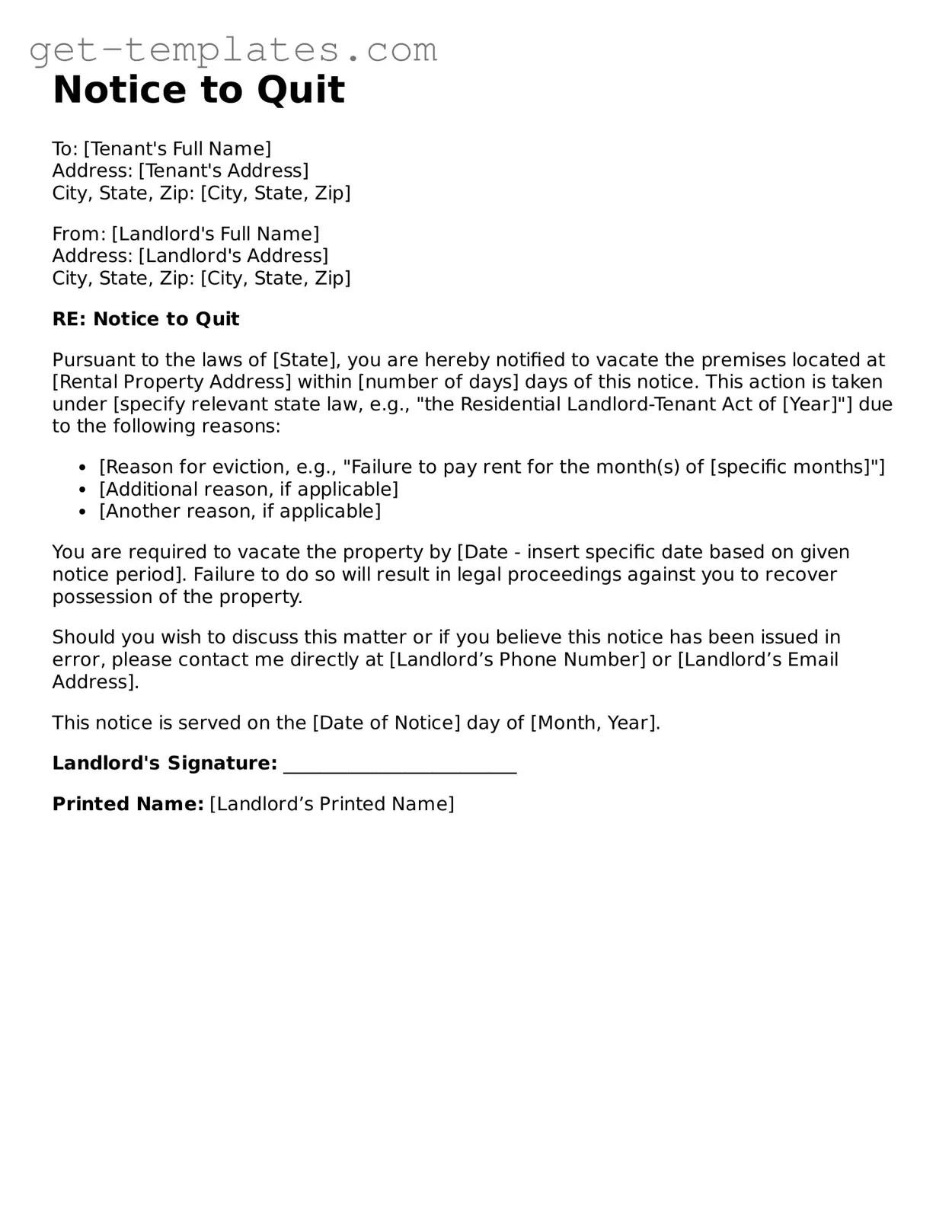Notice to Quit
To: [Tenant's Full Name]
Address: [Tenant's Address]
City, State, Zip: [City, State, Zip]
From: [Landlord's Full Name]
Address: [Landlord's Address]
City, State, Zip: [City, State, Zip]
RE: Notice to Quit
Pursuant to the laws of [State], you are hereby notified to vacate the premises located at [Rental Property Address] within [number of days] days of this notice. This action is taken under [specify relevant state law, e.g., "the Residential Landlord-Tenant Act of [Year]"] due to the following reasons:
- [Reason for eviction, e.g., "Failure to pay rent for the month(s) of [specific months]"]
- [Additional reason, if applicable]
- [Another reason, if applicable]
You are required to vacate the property by [Date - insert specific date based on given notice period]. Failure to do so will result in legal proceedings against you to recover possession of the property.
Should you wish to discuss this matter or if you believe this notice has been issued in error, please contact me directly at [Landlord’s Phone Number] or [Landlord’s Email Address].
This notice is served on the [Date of Notice] day of [Month, Year].
Landlord's Signature: _________________________
Printed Name: [Landlord’s Printed Name]
